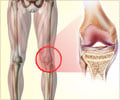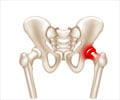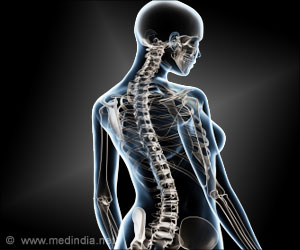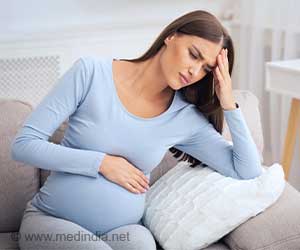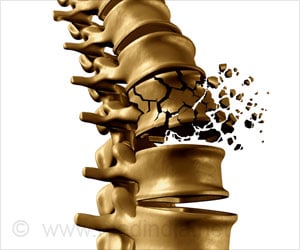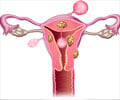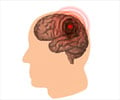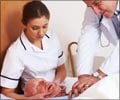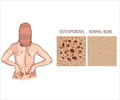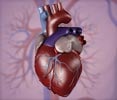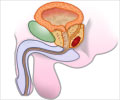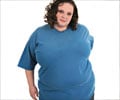What is Osteoporosis?
Osteoporosis is a bone disease that weakens bones and increases the risk of fracture. It occurs when the bone mass and mineral density decreases and the bone structure and length changes.
The risk of developing the disease increases with age, family history, hormonal changes, and lack of calcium and vitamin D (1✔ ✔Trusted Source
Overview of Osteoporosis
Go to source).
Symptoms of osteoporosis are back or neck pain, loss of height, stooped posture, and bone fractures (2✔ ✔Trusted Source
Osteoporosis
Go to source).
Top 10 Facts on Osteoporosis
Let us know the important facts about osteoporosis, which is becoming a major public health threat globally.
History of Osteoporosis
- The term “osteoporosis” is derived from the Greek word osteon, which means “bone,” and poros, which means “passage” or “space” (3✔ ✔Trusted Source
Definition and diagnosis of osteoporosis
Go to source). - Osteoporosis was recognized as a disease in the 1800s, and was first described by English surgeon Astley Cooper (1768-1841), who noted that it was seen to affect the elderly. In 1830, French physician Jean Lobstein (1777-1835) coined the term “osteoporosis” because bones of affected persons had larger than usual gaps or pores (4✔ ✔Trusted Source
Osteoporosis historical perspective
Go to source).
Statistics on Osteoporosis
- Osteoporosis can occur in both the genders, but is much more common in post-menopausal women. It is estimated that 50% of women will get osteoporosis during their lifetime (5✔ ✔Trusted Source
Primary osteoporosis in postmenopausal women
Go to source). - Reports suggest that over 200 million worldwide suffer from osteoporosis, with the risk increasing by nearly 6 times in women aged 90 years in comparison to women who are 60 years (6✔ ✔Trusted Source
Epidemiology
Go to source). - Osteoporosis is responsible for nearly 2 million fractures annually worldwide (7✔ ✔Trusted Source
About Osteoporosis
Go to source). - After 30 years, more bone is lost than what can be replaced by bone remodeling, causing a 5-10% decrease in bone mass every decade (7✔ ✔Trusted Source
About Osteoporosis
Go to source). - Research has shown that adolescent boys who consume less than 1,000 milligrams of calcium per day and girls consuming less than 850 milligrams daily will fail to reach their optimal bone mass levels (8✔ ✔Trusted Source
Calcium deficiency worldwide: prevalence of inadequate intakes and associated health outcomes
Go to source).
Risk Factors of Osteoporosis
- Risk factors for the development of osteoporosis include gender, age, body size, ethnicity, family history, hormones, diet, medication, activity level, and lifestyle (9✔ ✔Trusted Source
A comprehensive overview on osteoporosis and its risk factors
Go to source).
Effects of Osteoporosis
- The spine is the most commonly fractured bone in osteoporosis. It can cause back pain, loss of height, and curvature of shoulders and back (10✔ ✔Trusted Source
Anatomy
Go to source). - The most serious effects of osteoporosis result from a hip fracture. They most often occur in persons over age 60 years (11✔ ✔Trusted Source
Hip Fracture
Go to source). - Fractures in the wrist, arm, pelvis, legs or ribs may cause significant pain and short-term disability. Surgical correction, casting or splinting may be necessary (12✔ ✔Trusted Source
Bone fractures
Go to source).
Diagnosis of Osteoporosis
- Younger women and men are being increasingly diagnosed with osteoporosis due to hormone imbalances resulting from diabetes, surgical menopause, menstrual irregularities, long-term steroid therapy and poor nutrition.
- Osteoporosis is referred to as a ‘silent disease’. It hardly produces any symptoms, and is first diagnosed only when a fracture occurs.It is diagnosed by tests called DEXA (dual energy X-ray absorptiometry) scan, which estimates bone density at the spine, hip or total body (13✔ ✔Trusted Source
Osteoporosis: Diagnosis, Treatment, and Steps to Take
Go to source).
Treatment for Osteoporosis
- Treatment of osteoporosis includes healthy lifestyle, balanced diet, regular exercise, and medications (14✔ ✔Trusted Source
Osteoporosis
Go to source).
Prevention of Osteoporosis
- Osteoporosis may be prevented or at least the risk may be reduced with the help of a balanced diet, regular physical activity, and taking precautions to prevent falls (14✔ ✔Trusted Source
Osteoporosis
Go to source).




